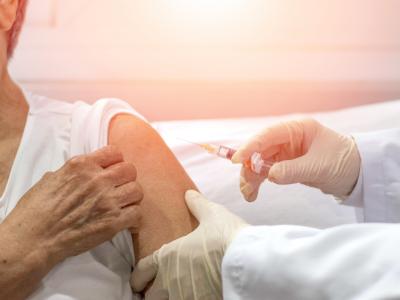Study finds post-cesarean antibiotics effective in obese women
Postoperative antibiotics more than cut in half the rate of surgical site infection (SSI) within 30 days after delivery among obese women undergoing cesarean delivery, according to the results of a randomized controlled trial published yesterday in JAMA.
US researchers conducted the study on 403 women who had a prepregnancy body mass index of 30 or greater, all of whom had received preoperative cephalosporin. Obesity has been tied to a higher risk of SSI. Half (202) of the women received 500 milligrams of both cephalexin and metronidazole every 8 hours after cesarean section for 48 hours, while 201 received placebos for the same period.
The scientists found that the rate of SSI within 30 days after delivery was 15.4% in the placebo group and 6.4% in the antibiotic treatment group. The authors estimate that 12 obese women would need to receive the treatment to benefit 1 patient.
The researchers detail some limitations of the study, including that the trial was performed at a single site with a high prevalence of obese patients, which may not be generalizable to all obstetric practices.
In an accompanying editorial, two experts from Weill Cornell Medicine in New York City also note, "Given that participant enrollment for this study began almost 7 years ago and extended over a 5-year period, one consideration is whether the surgical practices and SSI prevention measures used during the study are representative of those that are widely used today."
The editorial writers also bring up antibiotic resistance. "In an era of a rapidly increasing prevalence of antimicrobial resistance among common human pathogens, a global threat to which excessive and unnecessary antimicrobial use is a contributor, the societal implications of a call for increased antimicrobial use must always be considered carefully. While 48 hours of oral antibiotics may appear to represent a minimal amount of antibiotic exposure, broad implementation of this strategy could contribute approximately 1.26 million additional days of antimicrobial therapy in the United States each year."
Sep 19 JAMA study
Sep 19 JAMA editorial
GAO: Multiplex testing carries implementation challenges
Although multiplex point-of-care technologies (MPOCTs) can help conserve antibiotics and aid patient care, developers and users disagree on the strength of evidence showing improvement in patient outcomes, and the tests carry certain implementation challenges, the US Government Accountability Office (GAO) said in a report last week.
For the report, GAO scientists examined tests of varying sizes and capacities. The MPOCTs took from 20 minutes to 2 hours to produce results, cost from $25,000 to $530,000, and had per-test operation costs ranging from $20 to $200.
The researchers talked to multiple developers, who identified several technical challenges that can slow MPOCT development and raise costs, such as lack of access to patient samples or reliable genetic databases for developing the assays. Modifying multiplex assays poses another challenge, because developers have to consider possible new interactions and go through Food and Drug Administration review before the modified test can be marketed.
Test developers and test users disagreed on the strength of evidence showing the extent of improvement on patient outcomes. Some test users called for more clinical studies to establish benefits, while developers focused on implementation challenges, including the regulatory review process. Other implementation challenges included reluctance by medical users to adopt MPOCTs because of such factors as lack of familiarity and cost.
Sep 13 GAO report
Pneumococcal vaccination tied to fewer antibiotic doses in Danish kids
Introduction of pneumococcal conjugate vaccines (PCVs) in national immunization programs has been linked to lower rates of antibiotic prescribing and insertion of ventilation tubes in Danish children, according to a new study in Vaccine.
Researchers looked at the years before, during, and after the implementation of the seven-valent vaccine (PCV7) in 2007 and the 13-valent version (PCV13) in 2010.
They found that the introduction of PCV7 and PCV13 correlated with changes in the prescribing rate from an almost steady increase in antibiotic prescriptions in the pre-PCV period to a decreasing incidence for all children age 15 years and younger. The 2.4 defined daily doses (DDD) per person-year in 2014 was at almost the same level as in 2000 (2.3 DDD per person-year).
For ventilation tube insertion, the investigators observed a decreasing incidence rate in the years following introduction of PCV13, ending with a slightly higher incidence, at 35 per 1,000 person-years in 2014 compared with 31 in 2000.
Sep 18 Vaccine study













